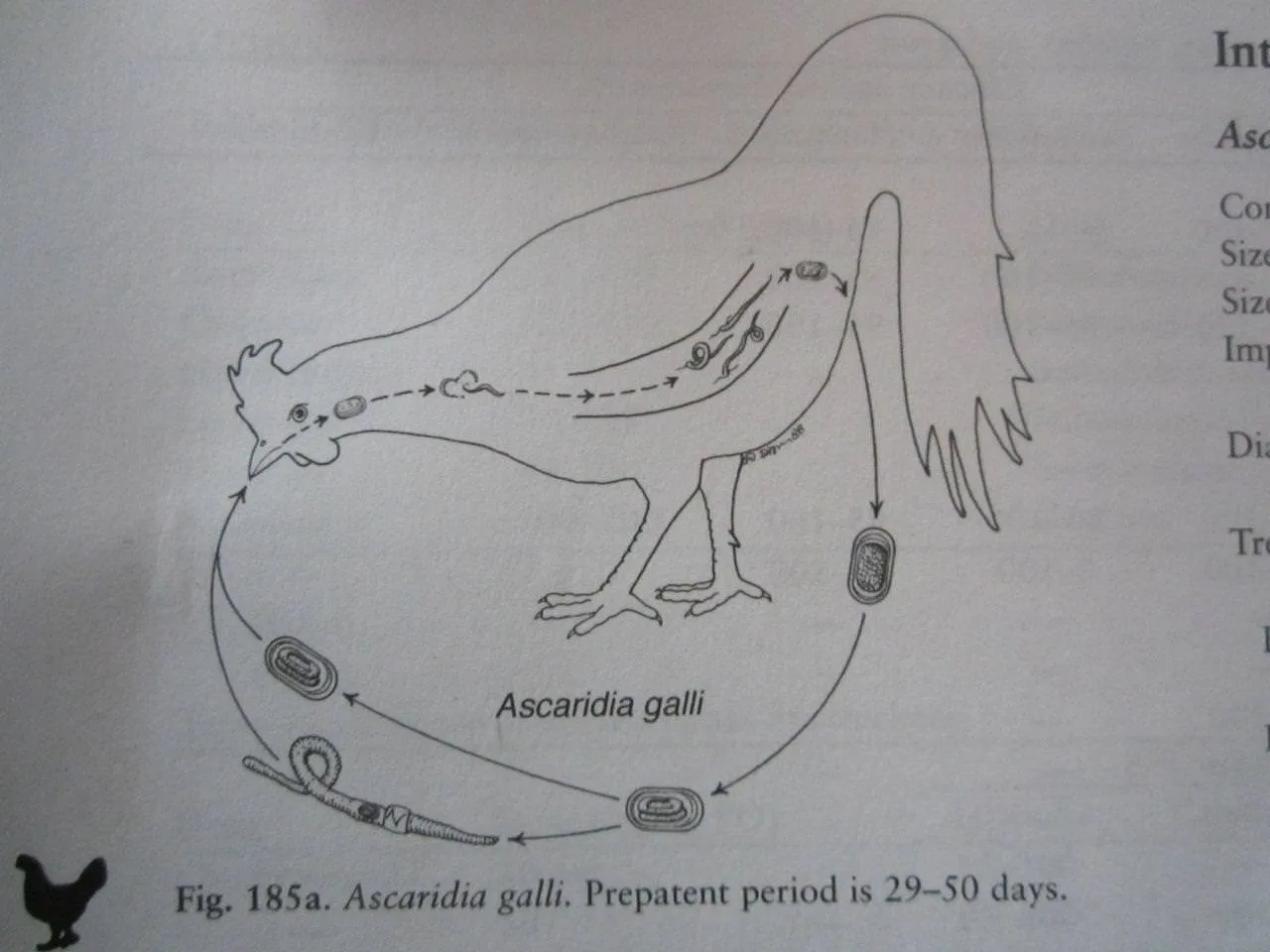
The life cycle of A. galli is direct in a single host, involving two main populations, namely the sexually adult parasite in the gastrointestinal tract and the infective stage (L2). The shape of eggs are oval and have thick, albuminous shells that are highly resistant to desiccation and persist for a long time in the environment. Larvae do not hatch but moult inside the eggs until they reach the L2 stage. This can take about two weeks but the period depends on other factors such as the weather condition. The life cycle is accomplished when the infective eggs are ingested by new hosts through contaminated water or feed. The eggs containing the L2-larvae-passive are mechanically deported to the duodenum, this is where molt and become larvae 3 and then larvae 4. The infective eggs are ingested by a chicken where it reaches the proventriculus and hatches.Temperature, carbon dioxide levels and pH are thought to be triggering factors that signal the larva to hatch from its egg. The larva then burrows into the mucosal lining of the small intestine where it undergoes two additional moults. It is this phase of their life cycle where these worms causes the most damage to their host. They then re-enter the small intestine and develop into adults where they live their lives out feeding on gut content and making a vast amount of eggs that would then be excreted by a host and free to continue their life cycle. If the animal is able to mount an immune response to the larvae, i.e. from pre-exposure, the larvae do not develop into adults but hide in the mucosa of the small intestine. This is common for infection of older birds. Transport hosts such as earthworms are thought to play a role in transmission of A. galli and hence, free range birds tend to have a higher risk of infection.